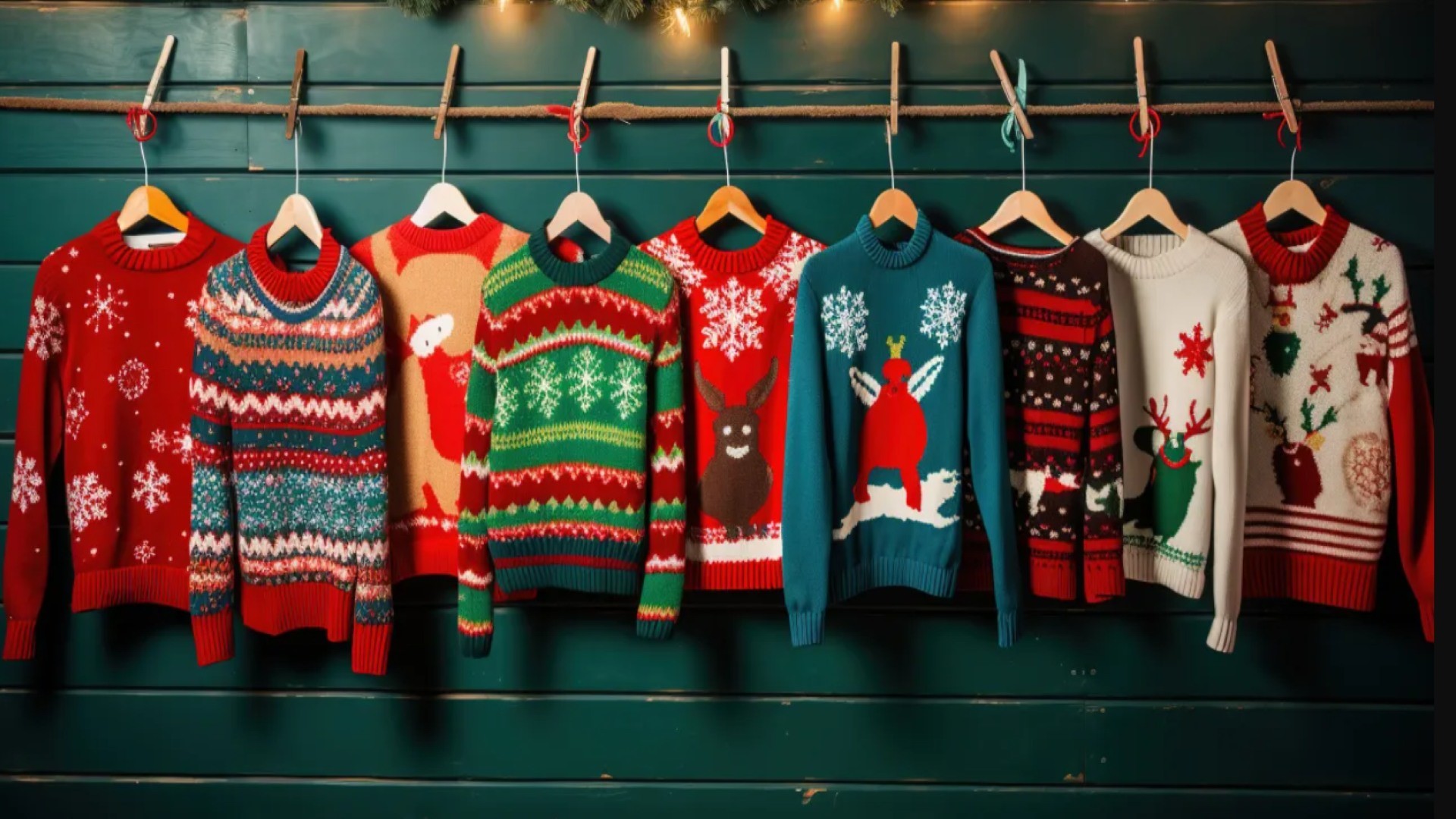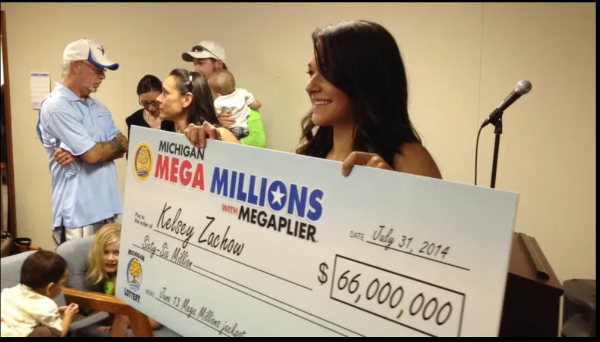What Is Bisexuality: History, Characteristics, Tips To Know If You’re Bisexual
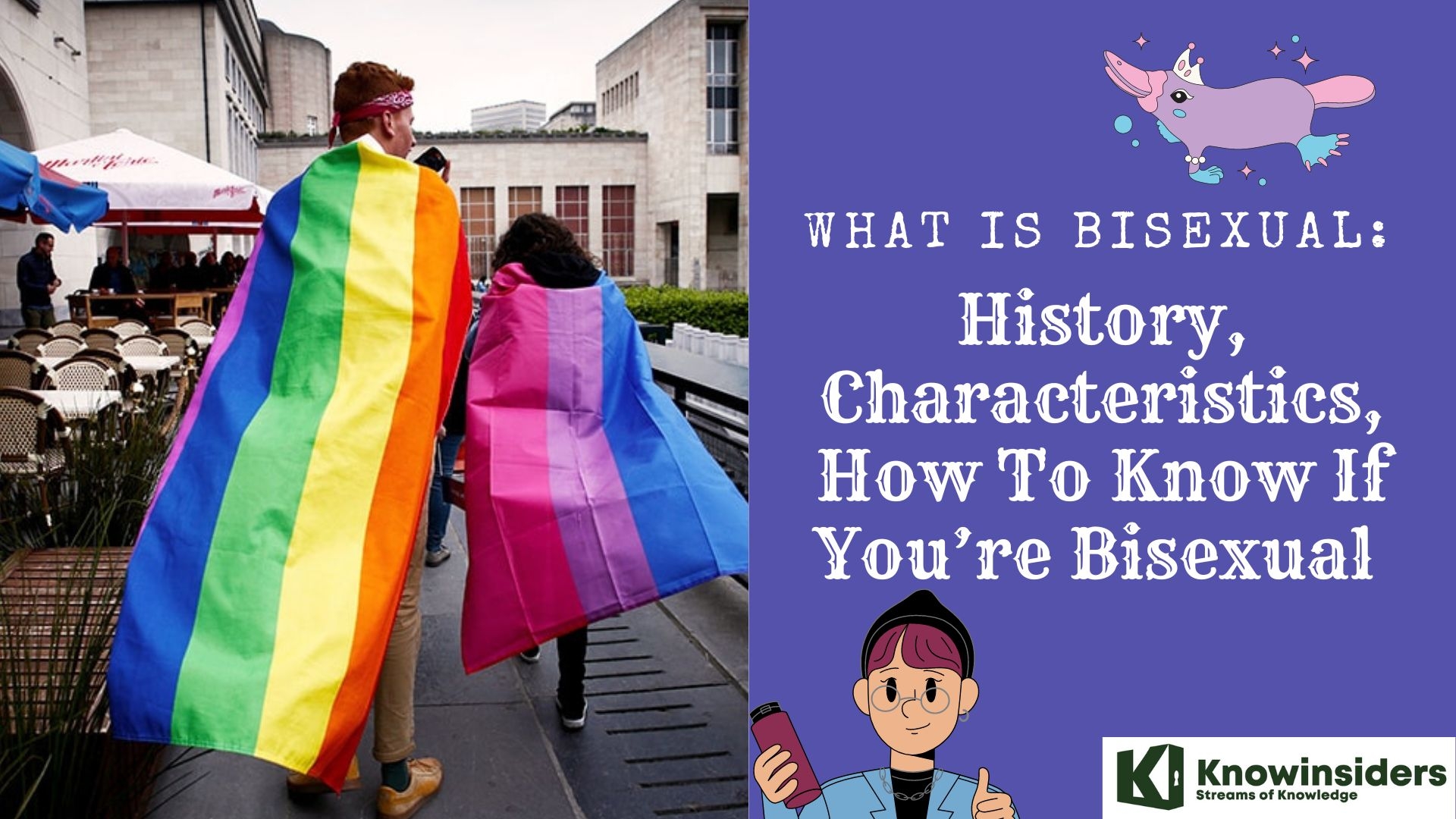 |
| What Is Bisexuality: History, Characteristics, How To Know If You’re Bisexual. Knowinsiders.com |
| Table of Content |
The term “bisexual” is used to describe a person who experiences emotional, romantic and/or sexual attractions to, or engages in romantic or sexual relationships with, more than one sex or gender.
The Centers for Disease Control and Prevention reported in a 2016 publication that 1.3 percent of women and 1.9 percent of men said they were “homosexual, gay, or lesbian,” and that 5.5 percent of women and 2 percent of men said they were bisexual. These findings indicate that bisexual people may comprise the largest single group in the LGBT community for both women and men. Nevertheless, many believe that bisexuality does not really exist, and bisexual people suffer bi-invisibility or erasure and bi-negativity from both the lesbian and gay community and the heterosexual community, which may explain evidence suggesting higher rates of health disparities bisexuals experience compared to either.
Here is everything we need to know about Bisexuality, and how to know if you are bisexual.
What is Bisexuality?
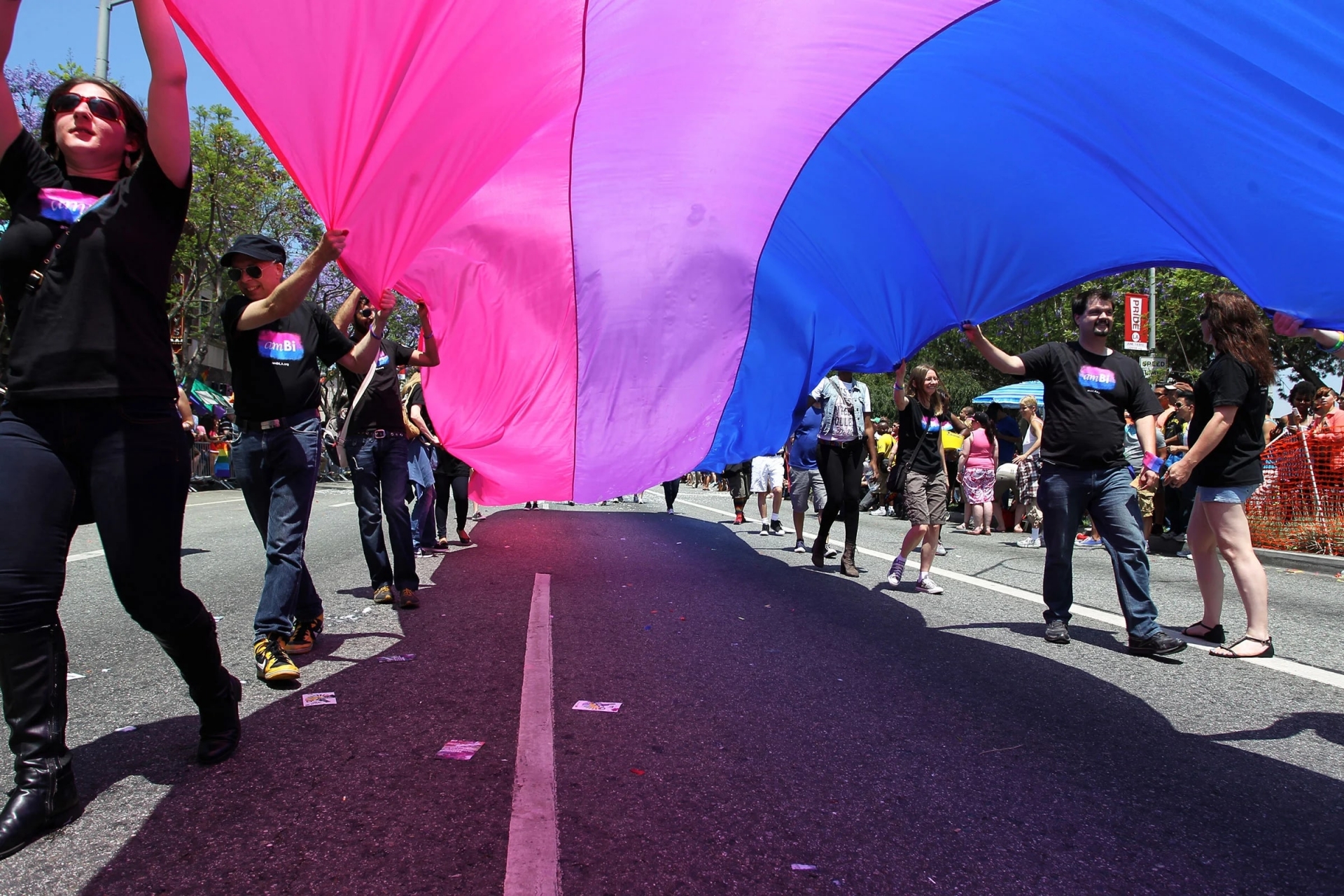 |
| Photo: Time |
Bisexuality is a sexual orientation, and bisexual (commonly abbreviated to “bi”) people are those who have the capacity to form attraction and/or relationships to more than one gender. Bisexual advocate Robyn Ochs’ popular definition of bisexuality is, “The potential to be attracted — romantically and/or sexually — to people of more than one sex and/or gender, not necessarily at the same time, not necessarily in the same way, and not necessarily to the same degree.” Bisexual people make up a significant portion of queer young people. According to the Centers for Disease Control and Prevention’s Youth Risk Behavior Survey, bisexual people compromised 75% of young people who identify as lesbian, gay, or bisexual. Remember, people of any gender can identify as bisexual or be attracted to more than one gender.
Is Bisexuality Binary?
Some argue that bisexuality reinforces the gender binary because the prefix bi- in bisexual comes from the Greek prefix for “two.” Many words that describe sexuality were originally rooted in the gender binary, due to limited understandings of gender at the time by larger society. (For example: “heterosexuality” has the prefix hetero- which comes from Greek, meaning “the other of two; different.”) However, the historical and cultural definition of the term bisexual has always referred to more than one gender, and the current definition is not specifically binary. Identity definitions are not just literal. They are a part of our ever-evolving language that reflects the diversity of the people using these words.
History of Bisexuality
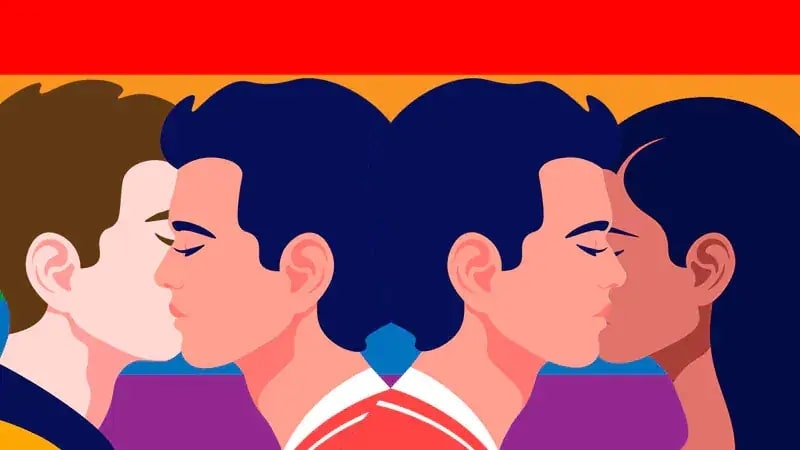 |
| Photo: Medscape |
In 1859, anatomist Robert Bentley Todd first used the term ‘bisexuality' to refer to the possession of ‘male’ and ‘female’ physical characteristics in the same body – today, we might understand this as being intersex. This meaning was taken up by nineteenth-century sexologists – scientists and psychologists studying sex and sexuality, including Henry Havelock Ellis and Richard von Krafft-Ebing – who explored evolution and speculated about “the latent organic bi-sexuality in each sex”, noting that “at an early stage of development, the sexes are indistinguishable”.
By the beginning of the twentieth century, this meaning had shifted to focus on a combination of ‘masculine’ and ‘feminine’ gendered characteristics – what today we would describe as androgyny. The modern meaning of bisexuality, which describes sexual and/or romantic attraction rather than sexed or gendered characteristics, only developed in the 1910s. However, for many years the different meanings of bisexuality were used at the same time and sometimes in the same texts. Sigmund Freud made his famous claim about ‘universal’ bisexuality in 1915, but referred to this both as a combination of masculinity and femininity and as a sexual or romantic attraction, writing, “the sexual object is a kind of reflection of the subject’s bisexual nature”.
But if people in the past didn't use the term 'bi', how did people attracted to more than one gender describe themselves?
There is no simple answer to this question. Some didn’t use an identity label at all, preferring not to categorise their relationships. Some understood themselves as heterosexual, while others identified as gay or lesbian. Others described themselves using percentages or ratios, such as ‘60:40 gay:heterosexual’. When the term ‘gay’ was first popularised by gay liberationists in the 1970s, it often linked radical politics and same-gender attraction, but didn’t necessarily exclude people who were attracted to, or had relationships with, multiple genders.
It wasn’t until the late 1970s that the current understanding of bisexuality, as an orientation or capacity for attraction, became widely accepted in the UK as "the more common usage". Around this point, we started to see bi groups and events being established. The UK’s first bi group, London Bisexual Group, was formed in 1981, followed by other groups in Edinburgh (1984), Brighton (1985), Manchester (1986) and Glasgow (1988), as well as a London-based Bisexual Women’s Group. A magazine, Bi-Monthly, was founded, as well as two bi helplines in London and Edinburgh, and the UK’s longest continually-running LGBTQ+ community event, the annual BiCon.
Bi terminology and politics have continued to evolve since the 1980s. While definitions of bisexuality initially focused on attractions to ‘both’ genders, over time it became more common to refer to ‘attraction to more than one gender’. The term ‘pansexual’ became popular in the 1990s in response to concerns about bisexuality upholding the gender binary, using the prefix ‘pan’ (‘all’) to suggest attraction that is not limited by gender. But this doesn’t mean that bi people are therefore only attracted to two genders. Some people attracted to more than one gender identify as both bi and pan, some as one or the other, and some as neither. The 1990 manifesto of Anything that Moves, a US bi magazine, explicitly stated that bisexuality shouldn’t be understood as binary: “Do not assume that bisexuality is binary or duogamous in nature: that we have “two” sides or that we must be involved simultaneously with both genders to be fulfilled human beings. In fact, don’t assume that there are only two genders”.
Today, we still see the complex history of bisexuality and the shifting use of language being used to erase bi people’s identities, or suggest that they are a ‘phase’. This has hugely damaging effects on bi people and communities. Stonewall’s Bi Report shows that bi people often report not feeling welcome in LGBTQ+ spaces, and experience much higher rates of discrimination from within the LGBTQ+ community. 43% of bi people have never attended an LGBTQ+ space or event, compared to 29% of gay men and lesbians. Research also indicates that bi people are also more likely to experience poor mental health, in part because of this erasure and discrimination.
Changing language should never be used as an excuse to dismiss or reject bi or pan people’s identities and attractions. One of my interviewees summed this up as: “Language evolves. September isn’t the seventh month. October isn’t the eighth month. Bisexual doesn’t mean two genders”.
Instead, understanding how language and communities have evolved reminds us that there is exciting potential for further change and progress in the future, towards greater equality for bi people and other LGBTQ+ people. For me, exploring and understanding this change is what makes learning about our history so important – in LGBT+ History Month, and all year round.
Differences Between Bisexuality and Pansexuality
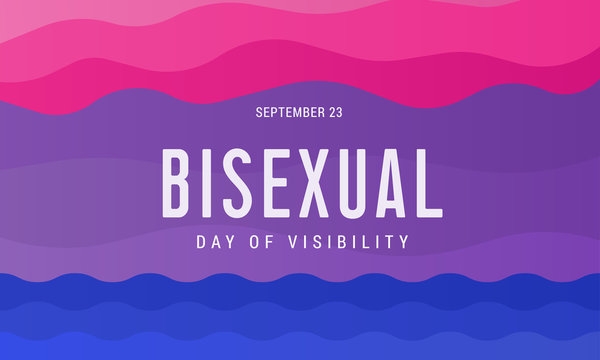 |
| Photo: Adobe Stock |
Bisexuality and pansexuality are both terms that people may use to describe sexual orientation. Generally, bisexuality refers to an attraction to more than one gender. People may define pansexuality as attraction regardless of gender.
However, people’s definitions of bisexuality and pansexuality might vary. They are related but distinct concepts.
Many different sexual orientations exist, and there are also many gender identities. Creating clear-cut definitions that apply to everyone can be challenging.
Pansexual definition
Typically, people who identify as pansexual can feel an attraction to anyone, including individuals who do not identify as a specific gender.
For example, people with a pansexual orientation may feel an attraction to someone who is agender. They might equally find a female, male, or gender-fluid person attractive.
It is important to note that identifying as pansexual does not mean feeling attracted to everyone, just as a heterosexual male does not feel an attraction to every female, and vice versa.
Bisexual definition
Bisexuality can mean different things, and not everyone will agree on a single definition. Generally, if someone identifies as bisexual, they feel an attraction to more than one gender.
Some people define their gender according to their biological sex. However, other people see themselves as agender or gender-fluid.
To some people, bisexuality might mean only feeling attracted to males and females. To others, it can mean feeling attracted to multiple gender identities.
Some people may find the word controversial, as it implies that there are only two genders. However, many people who identify as bisexual acknowledge that there are multiple genders.
Difference between the two terms
Most people agree that bisexuality refers to feeling attracted to multiple genders, while pansexuality is attraction to all genders. There are overlaps between the two, but they are distinct.
For example, someone who identifies as bisexual may feel attracted to those who are gender-fluid, men, or nonbinary but not those who are women.
Someone who is pansexual can have the same level of attraction to people of any gender. However, they may still experience this in different ways.
For both, the type of attraction that someone experiences might vary for different genders. For example, someone may feel a romantic attraction to one gender but a sexual attraction to another.
Organizations with a Specific Focus on Bisexuality
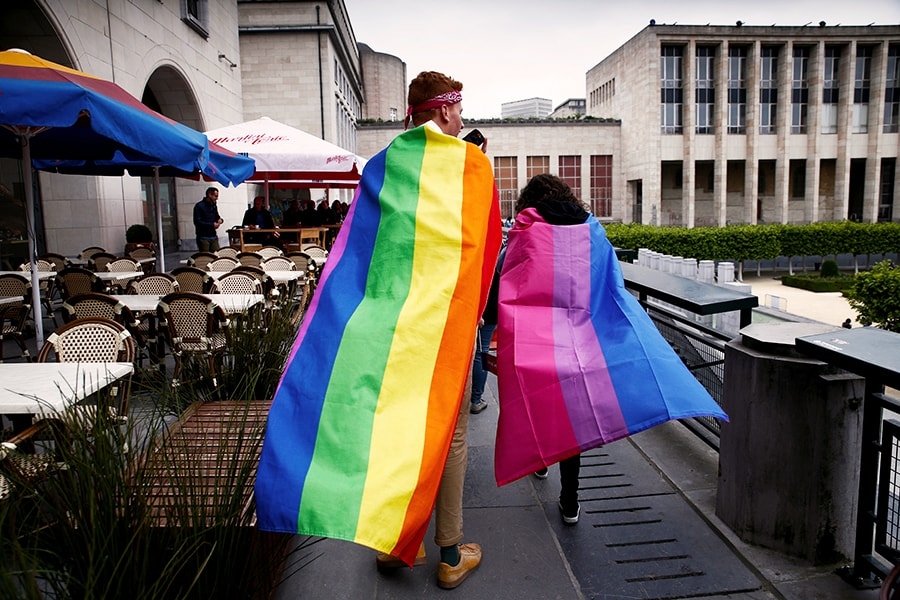 |
| Photo: ReachOut Australia |
The American Institute of Bisexuality
The American Institute of Bisexuality encourages, supports, and assists research and education about bisexuality, through programs likely to make a material difference and enhance public knowledge, awareness, and understanding about bisexuality.
BiNet USA
As America’s oldest advocacy organization for bisexual, pansexual, fluid, queer-identified, and unlabeled people, BiNet USA facilitates the development of a cohesive network of independent bisexual and bi-friendly communities; promotes bisexual and bi-inclusive visibility; and collects and distributes educational information regarding sexual orientation and gender identity with an emphasis on bisexual, pansexual, fluid and queer (bi+) communities.
Bisexual.org
The project is meant to introduce bisexual community to the world and give voice to the bisexual community, share accurate information, answer questions, and provide educational resources. It is a valuable resource for investigation of bisexuality, whether to better understand your own sexuality, to better understand a loved one or simply for learning.
Bisexual Resource Center (BRC)
The organization envisions a world where love is celebrated, regardless of sexual orientation or gender expression. Because bisexuals today are still misunderstood, marginalized, and discriminated against, the BRC is committed to providing support to the bisexual community and raising public awareness about bisexuality and bisexual people.
Bi Visibility Day
Bi Visibility Day, also known as International Celebrate Bisexuality Day, has been marked each year since 1999 to highlight biphobia and to help people find the bisexual community.
| Organizations that Include a Focus on Bisexuality GLAAD Accelerating Bi+ Acceptance Through media advocacy, GLAAD lifts up the stories of bisexual and allied communities to build understanding and accelerate acceptance.Human Rights Campaign (HRC) – Explore: Bisexual HRC is working with other advocates to increase bi-visibility and address the unique needs of the bisexual community. |
Meaning of Bisexual Pride Flag
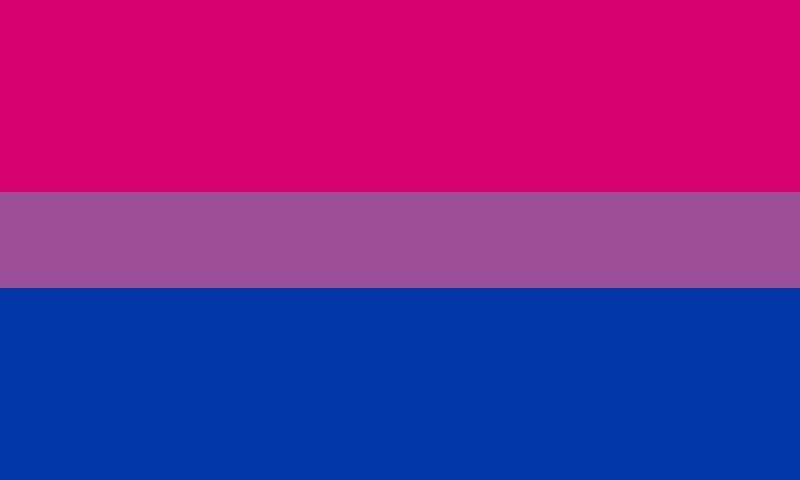 |
| Photo: Wikipedia |
Bisexual activist Michael Page created the bisexual flag and it was unveiled at the BiCafe’s first Anniversary Party on December 5, 1998. Page said, “The intent and purpose of the flag is to maximize bisexual pride and visibility.”
The bi flag colors are a combination of pink, purple, and blue. In flag-maker parlance, that’s magenta, lavender, and royal blue. Page was inspired by the Biangles—two overlapping triangles, one blue and one pink—that were a lesser-known symbol of bisexuality at the time.
From top to bottom, the stripes on the bi flag are pink, purple, and blue. The pink and blue stripes take up 40% of the flag, while the purple stripe takes up 20%. The pink represents same-sex attraction, the blue represents opposite-sex attraction, and the purple represents both.
There’s also another meaning to the colors and stripes. “The key to understanding the symbolism of the Bi Pride Flag is to know that the purple pixels of color blend unnoticeably into both the pink and blue just as in the ‘real world,’ where bi people blend unnoticeably into both the gay/lesbian and straight communities,” Page said.
Not only has the flag grown in popularity over the past 22 years, it's also inspired what's commonly referred to as "bisexual lighting." Bi lighting is when an image, video, or film uses shades of purple, blue, and pink, to underscore a person's bisexuality. A prime use of bisexual lighting occurs in Janelle Monáe's music video for "Make Me Feel." (The song has actually been hailed as a bisexual anthem!)
6 Misconceptions About Bisexuality
Bisexuals are only attracted to binary genders
There is a lot of discussion around whether the bi in bisexuality refers only to cisgender women and cisgender men. It doesn’t. It also assumes that all bisexual people are cis, which isn’t true. The Bisexual Manifesto, first published in 1990, explicitly tells people to not “assume that there only two genders.”
Bisexuality is commonly described as the potential to be attracted to genders similar to and different from your own, as popularised by Robyn Ochs. It can also be described as attraction to two or more genders.
Bisexuality and pansexuality are distinct sexualities, but the exclusion or inclusion of trans and non-binary people is not what separates them. While bisexuality is attraction to people of the same gender as yourself and to different genders, pansexuality is attraction to all genders. Many pansexual people describe their attraction as being regardless of gender.
Bi+ people are only bi+ when dating people who are the same gender as their own
Our sexuality is not dependent on the gender or sexuality of the people we are in relationships with. I’m a bisexual woman married to a straight man, that he is straight does not make me straight. My bisexuality does not make him bisexual. The same applies to bi+ people who are are dating gay or lesbian people.
Our sexuality is our own.
Bisexuals are 50% gay and 50% straight
Bisexual people are bisexual. We are not half gay or lesbian and half straight. By viewing bisexuality this way, you are saying that bi+ people are not complete in our own right.
To return to Robyn Ochs definition of bisexuality , she explains the ways that attraction can differ by including “people of more than one gender, not necessarily at the same time, not necessarily in the same way, and not necessarily to the same degree.”
Bisexual people are all promiscuous cheaters
This misconception encompasses a few false beliefs about bi+ people. Namely that we are afraid of commitment, incapable of picking a side and that our attraction to multiple genders always happens at the same time making us unable to remain monogamous.
These things could be true for some bi+ people—and equally true for some gay, lesbian and straight people—but they are not true of the bi+ community as a whole.
To quote the Bisexual Manifesto again, “Do not equate promoiscuity, infidelity, or unsafe sexual behaviour with bisexaulity. Those are human traits that cross all orientations.”
Bisexuality is just a phase
Bisexuality is not a phase. Bi+ men are not all secretly gay. Bi+ women are not all really straight.
There are people who identified as bi+ and came out later as gay or lesbian. This does not invalidate bisexuality as a sexual orientation.
Bi+ erasure is a myth
Bi+ erasure happens all the time. When gay is used as a catch-all term for events such as Pride. When out bisexual people are suddenly seen as gay, lesbian or straight based on the gender or sexuality of their new partner. When we are told that we do not face difficulties or discrimination for being bi+.
When Bi+ Ireland launched the ‘We Exist’ series in 2017, a common theme was that while we experience erasure from gay, lesbian and straight people it hurts more when it comes from within the LGBTQIA+ community.
The most cited example of this was during the marriage referendum, when the focus was on equal marriage for gays and lesbians. Bi+, trans and non-binary people were excluded from the messaging and expected not to talk about how the referendum affected them personally while canvassing.
Why it’s Important to Support Bisexual Youth
 |
| Photo: The Initiative |
While all LGBTQ young people are at a higher risk of experiencing negative mental health outcomes than their heterosexual and cisgender peers, it’s worth noting that bisexual youth statistically face more challenges than lesbian and gay youth as well. According to The Trevor Project’s research, almost half of bisexual youth seriously considered suicide in the past year. 66% of bisexual youth reported feeling sad or hopeless for two or more weeks in a row in the past year, compared to 27% of their heterosexual peers and 49% of their gay/lesbian peers. Additionally, more than one in three bisexual youth reported being bullied at school, and one in five bisexual youth reported being forced to have sexual intercourse. These outcomes for harassment, sexual assault, and rape are particularly severe for bisexual people as compared to their straight, gay, and lesbian peers.
These statistics underscore the need to increase public understanding and support for bisexual youth. They also remind us that no matter what words we use to describe an attraction to more than one gender, as a whole, this group faces significant obstacles and unique challenges. We must do more to make the world a safer place for bisexual young people.
FAQ: Bisexuality1. I finally came out to my parents/friends, but everyone has been telling me that being bisexual isn’t real, that I will grow out of it, or that it’s just a phase. But it’s not a phase. This is who I am! How can I help them understand? Answer: Coming out to your family and friends is a really brave step! That isn’t easy, and it can be even more difficult when it seems like you weren’t heard or accepted. Bisexuality is a real identity, and you’re never too young to know how you feel. If you know that you’re bisexual, then no one can tell you otherwise!Unfortunately, you can’t control how everyone reacts to your news. It’s possible that even if your family and friends heard you, they might not be ready to understand what you’re saying. It might help to give them some resources, like Bisexuality 101. 2. Do you have to be equally attracted to men and women to be bisexual? Answer: A person who is bisexual does not have to be equally attracted to more than one gender identity. In fact, most bisexuals don’t experience attraction in a 50/50 split. It is very common for bisexual people to prefer one gender over another, and some say that this preference changes over time. Some bisexual people feel romantic feelings towards one gender but physical attraction towards other. Only you can identify what you’re feeling. It’s important to remember, though, that there is no rush. Take as much time as you need to determine what makes the most sense for you. 3. Do I need to come out as bisexual if I don’t have a partner of the same gender? Answer: It is perfectly normal to feel unsure or worried about coming out. The question of whether or not you should come out is one that only you yourself can answer. Coming out has lots of positives; it can let people in your life know about an important part of you, it can help you to feel less alone, meet new friends as well as possibly meet people to date. There are some questions that you could ask yourself when deciding whether to come out. If you do decide to come out, who would be the first person you would come out to? What would be the best case scenario for coming out? What would be the worst? Is there a possibility that things may go wrong if you come out and, if there is a chance, do you have a back-up plan? If there is a chance that coming out may put you at any sort of risk or endanger your ability to continue living at home, you may want to wait to come out until you are more independent. Remember, it is your choice to come out and you do not have to come out to everybody in your life at once. You can choose who you want to come out to and when. You can also choose not to come out to certain people in your life. The choice is completely yours. Trevor supports you no matter what. 4. I have never hooked up with a boy EVER, so how do I know if I am really bisexual? Answer: A person doesn’t need to have a physical experience with someone else to understand who they’re attracted to. In fact, sexual orientation describes way more than physical attraction – it includes our romantic, emotional, mental, and/or spiritual attraction to other people, too. Think about the crushes you’ve had, and who you fantasize about being with: girls, boys, both, or maybe other genders or sexes that don’t fit into the binary. Remember bisexual people do not need to have had equal sexual experiences with both men and women. It’s all up to how you feel – and if identifying as bisexual sounds right to you, then go for it! |
Do we need labels?Labels can be a huge source of self-understanding for some LGBTQ people. Because we live in a society where everyone is assumed and expected to be straight and cisgender, finding the words to define yourself can be an act of liberation. Labels can help connect people to one another, allowing them to feel less alone and to create community together. Labels also allow researchers to study marginalized groups, giving us important information to better understand and support these groups. While labels feel meaningful for some LGBTQ people, labels can feel restrictive for others. It’s OK to explore different labels or to avoid labels altogether! You are never required to label your identity in a particular way or to disclose your identity, especially if doing so would compromise your safety. Coming OutNo matter which part of our beautiful queer family you belong to, coming out can be a daunting experience. In addition to a lot of the concerns LGBTQ folks express about coming out, there are unique difficulties in coming out as bi. And a lot of coming out resources don't talk about them. Nevertheless, many people also express an enormous sense of relief after coming out. Spending your life lying about who you are is stressful and alienating. Working through that initial fear often leads to a much happier and simpler life in the long term. "But what if I'm monogamous? Do I still need to come out?" You never need to come out, but plenty of bi folks are in monogamous relationships and happily out. Being monogamous doesn't make you not bi; it just means you're monogamous. "Won't people think it's a phase?" One difficulty of coming out as bi is the perception of choice. There are those who are willing to accept that a gay or lesbian friend or family member cannot help their orientation and so are willing to accept their same-sex partners. They are seen as helpless victims of their orientation who cannot help who they love. These same people will often perceive bi people as greedy or indecisive. The problem is that the only way to change this perception is to have more bi people out and visible. You are far from alone. Recent research shows that 52% of the LGB community is bi. "When will I be done coming out?" Probably never. "Being out" is a colloquialism that describes a lifelong process. You may be out to your closest friends and family, but not your coworkers, or it may be the first thing listed on your Facebook profile. You get to decide who you are out to, and that should be true for everyone. Bi folks face an extra hurdle in this respect. It's not always obvious to people when we are bi. If a woman is seen holding hands with a woman, most people will assume that they are lesbians. It will not cross their mind that one or both may be bi. You will find people assuming your sexuality based on your partners or dating patterns over and over. The good news is you will find it easier to remind people that you are indeed bi. The better news is that the more we remind people that we are indeed bi, the less they will assume. Everyone goes through this process differently, and it is easier for some of us than others. Some of us have known we were bi as long as we can remember; some of us didn't figure it out for a very long time. Families, relationships, communities, local laws may all impact how, when, and to whom you come out. But know that there are a lot of people rooting for you. |
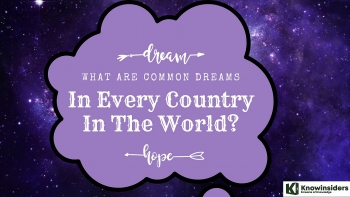 Most Common Dreams In Every Country In The World - According to Google Search Most Common Dreams In Every Country In The World - According to Google Search The research team analyzed Google search data to reveal the dream obsessions of Americans, Australians, French, Germans, Vietnamese, etc. Take a look at some of ... |
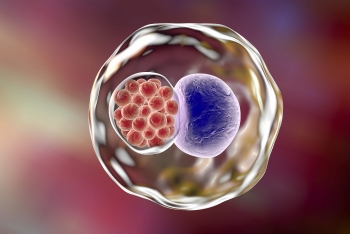 What is Chlamydia: Infections, Symptoms and Treatment What is Chlamydia: Infections, Symptoms and Treatment Chlamydia is a sexually transmitted disease caused by Chlamydia trachomatis bacteria. Chlamydia bacterial infections are more common among sexually active teens and young adults. Chlamydia ... |
 What is The Largest Library In The World? What is The Largest Library In The World? What do you know about the largest library in the world, Library of Congress? If you are curious about this amazing construction, it is time ... |
 What is E. coli: Symptoms, Sauses and Treatment What is E. coli: Symptoms, Sauses and Treatment Only a few strains of E. coli trigger diarrhea. The E. coli O157:H7 strain belongs to a group of E. coli that produces a powerful ... |

